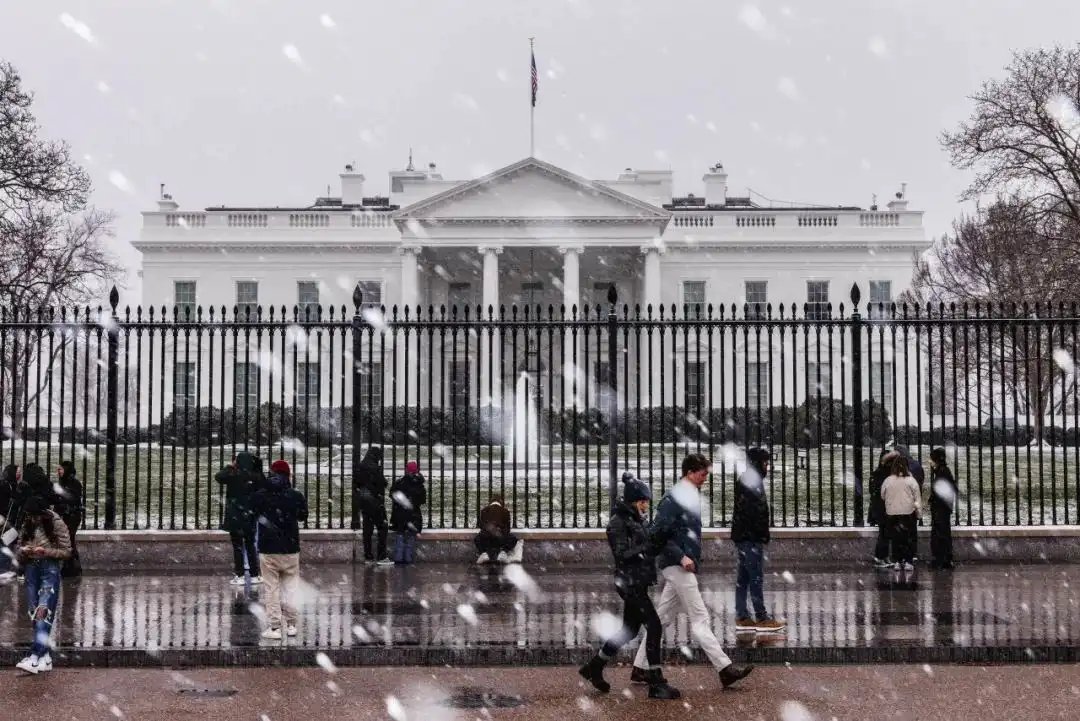The Federal Reserve's interest rate cut game disrupts global markets
After the latest inflation data was released last week, the Federal Reserve once again stressed that it was not in a hurry to cut interest rates. However, due to increased pressure on high interest rates, increased risks in commercial real estate, and constant doubts about employment data from all parties, the Federal Reserve's statement is difficult to calm the sentiment of market institutions. The US game on interest rate cuts is disturbing global markets.
3月29日,美国商务部公布数据显示,2月美国个人消费支出(PCE)价格指数环比上涨0.3%,涨幅较前一个月的0.4%有所放缓,表明美国通货膨胀率仍在整体下行。有分析指出,最新通胀数据强化了市场机构的降息预期, He also speculated that the Federal Reserve might implement a rate cut path of "suspending or slowing down the contraction of the balance sheet in May, starting interest rates in June, and cutting interest rates three times during the year."
** **1月在美国首都华盛顿拍摄的白宫。阿伦摄(新华社)
**1月在美国首都华盛顿拍摄的白宫。阿伦摄(新华社)
与市场机构“殷切”期盼降息不同,The Fed did not give a clear outlook on the path of interest rate cuts ,在公开表态中依然延续着来回摇摆的调门。在3月货币政策例会结束后的声明中,美联储表示“如果出现可能阻碍目标实现的风险,将准备酌情调整货币政策立场”,但在随后的新闻发布会上,美联储主席鲍威尔却又认为长期通胀预期不稳定,“尚未在各项数据中获得可以开始降息的信心”。
有分析指出,Factors such as concerns about recurring inflation, belief that the job market is stable and the financial market environment is relatively loose are the main reasons why the Fed insists on not cutting interest rates temporarily. 由于预期通胀进展将会是不平稳的,美联储坚称降息的时机选择“事关重大”。鲍威尔在3月29日也表示,劳动力市场疲软将是降息的一个刺激因素,“就业恶化的迹象并不多”。
However, in the eyes of some market institutions, the Fed's reasons are not convincing.
Judging from inflation data, the core PCE price index rose by 0.3% month-on-month, which was lower than the 0.5% increase in January; it rose by 2.8% year-on-year, also lower than the 2.9% in January. Overall, it seems to be in a volatile downward trend, and there is no obvious recurrence of the Fed's concerns.
Judging from employment data, doubts about U.S. labor market data are increasing, and even within the Federal Reserve system, different voices are beginning to emerge. Last week, the Federal Reserve Bank of Philadelphia released a report saying that the employment data released by the U.S. Bureau of Labor Statistics (BLS) was seriously distorted, and the actual new jobs in the U.S. non-farm payrolls data in 2023 were overestimated by 800,000.
From the perspective of the financial environment, the risks brought to the U.S. banking industry by high interest rates have not gone far away. Many small and medium-sized banks are facing increasingly serious problems of high financing costs and low profitability. In addition, the vacancy rate of commercial real estate in the United States continues to rise. Since many commercial mortgages were signed 10 years ago when interest rates were low, it is difficult for property owners to refinance in the current high-interest rate environment as the mortgage matures. Once the number of defaults increases significantly, it will inevitably further deteriorate the financial situation of the banking industry.
Under high interest rates, the game between the Federal Reserve and some market institutions over expectations of interest rate cuts affects the U.S. stock market, and the global market is also very sensitive to its troubles.
As the European Central Bank follows the United States in monetary policy, continued high interest rates have curbed economic growth in many European countries, and increased financing costs have reduced corporate profits in most European countries. The Federal Reserve's delay in cutting interest rates has created uncertainty about whether the European Central Bank will cut interest rates in the future. In early March, the international credit rating agency Moody's announced that it would downgrade the banking rating outlook of six European countries including Germany, the United Kingdom, and France from stable to negative.
The Bank of Japan is deeply influenced by U.S. monetary policy. Although negative interest rates have ended, the future direction of Japan's monetary policy is unclear. Barclays Bank released a research report at the end of March, saying that if there is no significant reduction in interest rates in the United States, the Bank of Japan may soon have to continue to raise interest rates to correct the continued weakness of the yen.
For emerging markets and developing economies, the Federal Reserve maintains high interest rates and continues to attract funds that had previously poured into emerging market economies to quickly return to the U.S. market. The huge "tide" of the US dollar has caused a series of crises such as the rupture of the capital chain and currency devaluation, and the pressure on debt repayment denominated in US dollars has soared.
其实,高利率对美联储的影响也不小。3月26日,美联储发布审计后的财报显示,美联储利息支出增长(包括美联储逆回购操作的准备金余额)在2023年几乎增加了两倍,达到2811亿美元。受此影响,美联储去年支出超出收入1143亿美元,为有史以来最大运营亏损。 The Fed has repeatedly stressed that net losses will not hinder its ability to operate or implement monetary policy. How long this determination can last remains to be seen.
